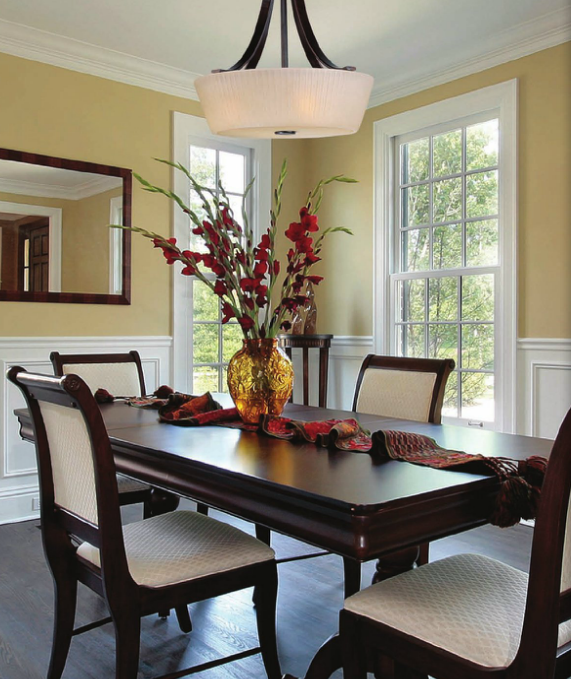If you’ve ever noticed that the colors of your walls, carpets, and furniture are more appealing at some times than others, you’re not alone. This change usually has to do with very subtle changes in the color of light that occur as the sun travels through its daily rainbow and seasonal changes. The direction that sunlight enters each room through your windows also has an influence on the tones of light that stream through them at various times of the day and year, along with the subtle tones of the shade and shadows as well.
Without diving too deeply into the fascinating science of light, I’d like to explore the influence that light, color, and the way that our eyes interpret them affect our color and décor schemes. I’ll also cover how our lighting design choices can take advantage of or mitigate any effects that we may experience because of the rhythms of natural light.
The Colors of Sunlight and Shadows

- As the sun passes through its daily rainbow, the northeast windows in your home will receive direct light in the morning when the sun casts a violet-to-blue hue. The shadows in a room with white walls will hedge towards the opposite tones of orange to brown.
- By noon, the sun is directly above casting a clear, transparent, yellow hue. Light entering your skylight will bestow a clear and sparkling effect on your walls and belongings, and the shadows will be in the purple range, which is the opposite of yellow.
- As the sun moves on towards sunset, your south and west facing windows will receive warm golden-orange and rose rays encouraging deeper tones of purple and blues into the shadows of those rooms.
In most instances, the colors of your décor in each room will respond to these hues of natural light and shadow favorably or unfavorably – depending on how your chosen colors mix with the complimentary shadows, as they are more pronounced than the transparent wash of colored light that splashes across the surfaces.
However, the pale pink walls and carpet in your room with south and west facing windows may appear much warmer in the afternoon, and if the surfaces are blue, green, or lavender, the orange southern sun may wash your walls into a tones of grey that you find perplexing and the shadows either intriguing or disturbing (think black and blue dress vs. gold and white dress).
When it comes to the colors and tones that we cast into our environment, it’s really all about personal choice and style. Interior design is entirely subjective, so feel free to explore and experience the effects that light paints upon on your walls and your mood.
Utilizing Temperatures of Light with Fixtures
Classic filament and standard incandescent bulbs bestow a warm glow, and fluorescents can be found with warm or cool tones to compliment the colors in your décor. Our showroom is overflowing with attractive pendants and chandeliers that cast intriguing light and shadow patterns on nearby surfaces, along with sconces that emphasize the texture of your walls. When you explore the many lighting options available you will be able to imagine the beautiful colors of light and shadow patterns that will accentuate your décor.


